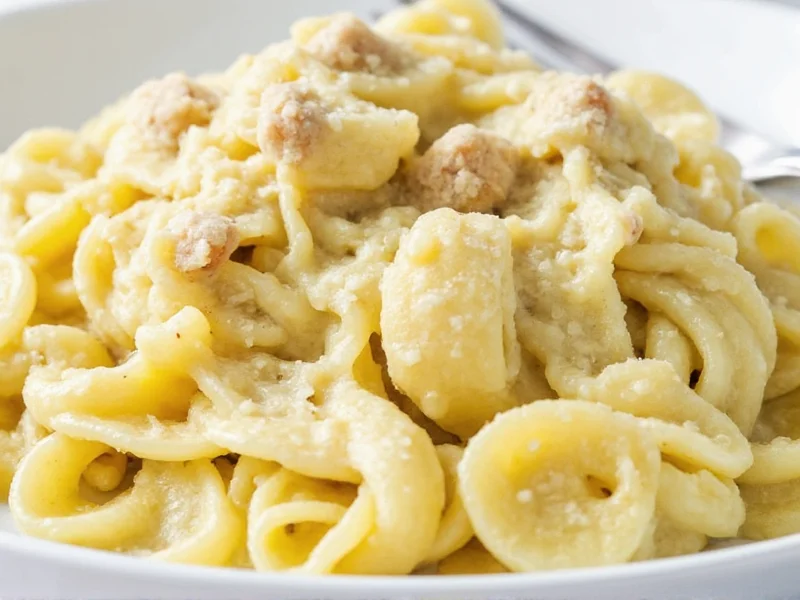Understanding Authentic Alfredo Foundations
Traditional Alfredo sauce, originating from Rome's Il Vero Alfredo restaurant, contains just three ingredients: butter, Parmigiano-Reggiano, and pasta water. Modern versions often include cream, but the quality of each component determines your final result. Many home cooks make Alfredo better by understanding that this sauce isn't about complexity - it's about perfecting simple elements.
Ingredient Selection: The Quality Difference
The difference between mediocre and magnificent Alfredo starts with ingredient quality. Consider these critical choices:
| Ingredient | Average Quality | Professional Quality | Impact on Final Sauce |
|---|---|---|---|
| Cheese | Pre-grated Parmesan | Freshly grated Parmigiano-Reggiano | Prevents graininess, enhances nutty flavor |
| Butter | Standard supermarket butter | European-style (82-86% fat) | Richer mouthfeel, better emulsification |
| Cream | Light cream or half-and-half | Heavy cream (36-40% fat) | Prevents separation, creates luxurious texture |
| Seasoning | Salt from shaker | Sea salt flakes + fresh pepper | Balanced seasoning without bitterness |
Mastering the Emulsification Process
How to make Alfredo better fundamentally involves understanding emulsification. The sauce breaks when fat and liquid separate, typically from:
- Excessive heat causing butter to separate
- Adding cheese too quickly
- Using pre-grated cheese with anti-caking agents
- Insufficient pasta water for binding
Professional chefs maintain sauce integrity by heating cream and butter to exactly 140-160°F (60-71°C) before gradually whisking in cheese. Add cheese in three increments, allowing each addition to fully incorporate before adding more. This technique creates a stable emulsion that won't break when served.
Flavor Enhancement Strategies
While traditional Alfredo remains pure, subtle enhancements can elevate your sauce without compromising authenticity:
- Nutritional yeast (1 tsp) - adds umami depth without altering appearance
- Lemon zest (1/4 tsp) - brightens richness without detectable citrus flavor
- Garlic confit (1 small clove, minced) - provides mellow garlic notes
- White wine reduction (1 tbsp) - adds complexity before adding cream
These professional alfredo sauce tips for home cooks transform basic preparations into restaurant-quality dishes. Remember that less is more - never add cream after the sauce has formed, as this disrupts the emulsion.
Avoiding Common Alfredo Sauce Mistakes
Even experienced cooks make these errors when trying to improve homemade alfredo sauce:
Grainy Texture Problems
Caused by:
- Pre-grated cheese with cellulose
- Excessive heat during cheese incorporation
- Adding cheese all at once
Solution: Always use freshly grated cheese and maintain gentle heat. If your sauce becomes grainy, remove from heat and whisk vigorously while adding 1-2 tbsp warm cream.
Sauce Separation Issues
Prevent separation by:
- Maintaining temperature below 160°F (71°C)
- Using adequate pasta water (1/4 cup per serving)
- Whisking constantly during cheese incorporation
Advanced Techniques for Perfect Alfredo
For those seeking authentic alfredo sauce recipe improvements, consider these professional methods:
The Double Boiler Method
Create a more stable emulsion by preparing the sauce over a double boiler. This gentle, indirect heat prevents scorching and gives you greater control during cheese incorporation.
Pasta Water Integration
Reserve 1 cup of starchy pasta water before draining. Add 1/4 cup to the sauce base before incorporating cheese, then adjust consistency with additional water as needed. The starch acts as a natural emulsifier and helps the sauce cling to pasta.
Finishing Touches
Never serve Alfredo sauce immediately after preparation. Let it rest for 2-3 minutes off heat, allowing flavors to meld. Just before serving, finish with:
- Freshly cracked black pepper
- Microplaned Parmigiano-Reggiano
- High-quality olive oil (optional)
Troubleshooting Guide
Even with careful preparation, issues can arise. Here's how to fix common problems when trying to make alfredo sauce creamy without separation:
Too Thin
Simmer gently while whisking to reduce liquid content. Alternatively, create a slurry with 1 tsp cornstarch and 1 tbsp cold cream, then whisk into sauce.
Too Thick
Gradually whisk in warm cream or pasta water, 1 tablespoon at a time, until desired consistency achieves. Never add cold liquid to hot sauce.
Broken Emulsion
Remove from heat and whisk vigorously while adding 1-2 tbsp warm cream. For severe breaks, start a new base with 2 tbsp warm cream and gradually incorporate the broken sauce.
Serving and Pairing Recommendations
How to make Alfredo better extends beyond the sauce itself. Consider these finishing touches:
- Toss sauce with freshly cooked pasta in the pan rather than pouring over plated pasta
- Use flat noodles like fettuccine that hold sauce better than round shapes
- Serve immediately - Alfredo doesn't reheat well due to separation risks
- Pair with crisp white wines like Pinot Grigio that cut through richness











 浙公网安备
33010002000092号
浙公网安备
33010002000092号 浙B2-20120091-4
浙B2-20120091-4